Architecture technique
Bonjour,
Certaines développeurs juniors posent souvent les deux questions suivantes :
Quel parcours devrai-je suivre pour être architecte technique?
Existe t-il une certification d’architecte technique (Techno Microsoft)?
Pour répondre à la première question, je dirai en gros que c’est avec l’expérience que l’on devient architecte.
Voici quelques qualités d’un architecte technique :
- Un architecte regorge d’expériences variés sur divers projets à architecture différente.
- Un architecte est un passionné.
- Un architecte est ouvert (Il connait les forces et faiblesses de différentes architectures).
- Un architecte à un intérêt pour la gestion de projet (Il a la capacité de de faire des choix d’architecture sur des critères non techniques).
- Un architecte travaille étroitement avec les chargés de projets.
- Un architecte forme les équipes de développement sur les architectures des projets mis en place.
- Il peut peut intervenir dans des phases de prospections et d’avant-vente.
- C’est un fin speaker.
- Il lit, participe et partage ses connaissances (blogs, réseaux sociaux,…).
- Il ne connait pas la notion de “temps perdu”, il a toujours quelque chose à faire (lire un mag., écouter un podcast,…).
- …
Le plus souvent c’est en analysant, en scrutant les architectures de différents projets, en effectuant des revues de code, en écrivant des tests unitaires et en ayant un regard critique sur ces projets, qu’on devient capable de dire qu’elle pourra être l’architecture convenable (en fonction du cahier des charges).
S’agissant des certifications, actuellement, Microsoft en propose 4:
- MCA: Microsoft Messaging
- MCA: Microsoft SharePoint
- MCA: Microsoft SQL Server
- MCA: Directory ServicesPour d’informations, cliquez ici.
J’ai trouvé judicieux de publier une liste de livres que tout bon architecte technique (ou en devenir) de la plateforme Microsoft devrait lire (Cette liste est non exhaustive):
With the award-winning book Agile Software Development: Principles, Patterns, and Practices,Robert C. Martin helped bring Agile principles to tens of thousands of Java and C++ programmers. Now .NET programmers have a definitive guide to agile methods with this completely updated volume from Robert C. Martin and Micah Martin, Agile Principles, Patterns, and Practices in C#. This book presents a series of case studies illustrating the fundamentals of Agile development and Agile design, and moves quickly from UML models to real C# code.
...
LINQ in Action is a fast-paced, comprehensive tutorial for professional developers who want to use LINQ. This book explores what can be done with LINQ, shows you how it works in an application, and addresses the emerging best practices. It presents the general purpose query facilities offered by LINQ in the upcoming C# 3.0 and VB.NET 9.0 languages. A running example introduces basic LINQ concepts. You ll then learn to query unstructured data using LINQ to XML and relational data with LINQ to SQL. Finally, you ll see how to extend LINQ for custom applications.
The practice of enterprise application development has benefited from the emergence of many new enabling technologies. Multi-tiered object-oriented platforms, such as Java and .NET, have become commonplace. These new tools and technologies are capable of building powerful applications, but they are not easily implemented. Common failures in enterprise applications often occur because their developers do not understand the architectural lessons that experienced object developers have learned.
...
The Definitive Guide to Service Engineering
The key to succeeding with service-oriented architecture (SOA) is in comprehending the meaning and significance of its most fundamental building block: the service. It is through an understanding of service design that truly “service-oriented” solution logic can be created in support of achieving the strategic goals associated with SOA and service-oriented computing. Bestselling SOA author Thomas Erl guides you through a comprehensive, insightful, and visually rich exploration of the service-orientation design paradigm, revealing exactly how services should and should not be designed for real-world SOA.
Does it seem you’ve formulated a rock-solid strategy, yet your firm still can’t get ahead? If so, construct a solid foundation for business execution—an IT infrastructure and digitized business processes to automate your company’s core capabilities. In Enterprise Architecture as Strategy: Creating a Foundation for Business Execution, authors Jeanne W. Ross, Peter Weill, and David C. Robertson show you how.
... ......
...
...
Among the 97 principles in this book, you’ll find useful advice such as:
- Don’t Put Your Resume Ahead of the Requirements (Nitin Borwankar)
- Chances Are, Your Biggest Problem Isn’t Technical (Mark Ramm)
- Communication Is King; Clarity and Leadership, Its Humble Servants (Mark Richards)
- Simplicity Before Generality, Use Before Reuse (Kevlin Henney)
- For the End User, the Interface Is the System (Vinayak Hegde)
- It’s Never Too Early to Think About Performance (Rebecca Parsons)
...
Understanding the mechanics of software change: adding features, fixing bugs, improving design, optimizing performance
-
- Getting legacy code into a test harness
- Writing tests that protect you against introducing new problems
- Techniques that can be used with any language or platform—with examples in Java, C++, C, and C#
- Accurately identifying where code changes need to be made
- Coping with legacy systems that aren’t object-oriented
- Handling applications that don’t seem to have any structure
Most programming languages contain good and bad parts, but JavaScript has more than its share of the bad, having been developed and released in a hurry before it could be refined. This authoritative book scrapes away these bad features to reveal a subset of JavaScript that’s more reliable, readable, and maintainable than the language as a whole-a subset you can use to create truly extensible and efficient code.
...
EnterpriseMake the right architectural decisions up front—and improve the quality and reliability of your results. Led by two enterprise programming experts, you’ll learn how to apply the patterns and techniques that help control project complexity—and make systems easier to build, support, and upgrade—right from the start. Stay tuned!
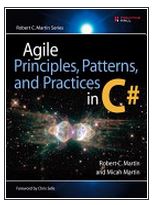
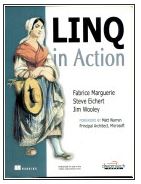
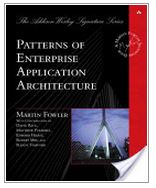
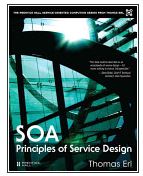
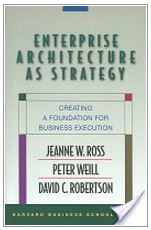
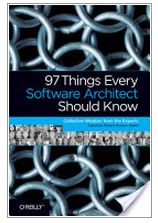
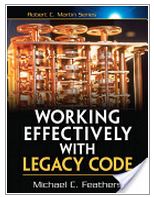

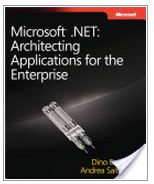
Commentaires récents